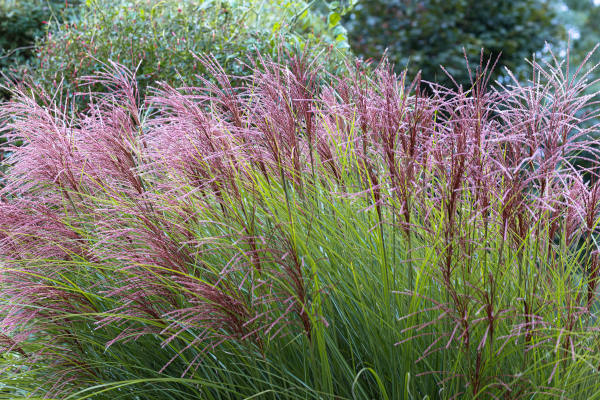How to grow Miscanthus
Also known as silver grass, eulalia, or maiden grass, miscanthus is a popular ornamental perennial grass grown for its silky, tassel-like flowerheads, arching foliage, and easy-to-grow nature. There are around 20 different species, all of which originate from moist meadows and marshland in an area spanning from Africa to East Asia. Of these, the most widely grown is Miscanthus sinensis, now available in dozens of cultivated forms. These offer variations in size (from 50 centimetres to up to 2.5 metres), foliage (variegated or plain), and many different flower colours/ forms.
Although miscanthus is a deciduous grass which grows and flowers during the warmer months, it is also valued for autumn and winter interest. Often, the foliage changes to rich russet colours in autumn and then bleaches out parchment pale for winter, while the flowers dry out on the plant providing height and interest throughout the frosty months.
Miscanthus is a reliable ‘do-er’ in the garden, able to grow happily in a range of conditions with the minimum of fuss. It doesn’t need staking, can be expected to live for many years, and of all the ornamental grasses is among the most tolerant of heavy soils.
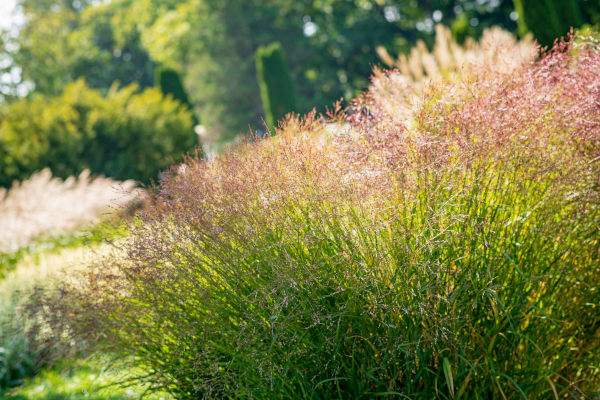
Zantedeschia is a genus of flowering plants from the family Araceae and is native to southern Africa. With a rich history dating back to the Ancient Romans, these deciduous or semi-evergreen perennials have been used as a symbol of celebration. Zantedeschia was Named after Professor Giovanni Zantedeschia, an Italian botanist.
There are two main forms of Zantedeschia: hardy and tender. Hardy forms of the plant can be grown outdoors, enjoy moist soil and full sun or partially shaded conditions - these are known as Arum lilies. Tender forms of Zantedeschia prefer being grown in containers or pots and should be brought inside over the winter - these are known as Calla lilies.
With tuberous flora in all colours from whites, yellows and oranges to deep reds and purples, Zantedeschias are not to be overlooked in any garden, as long as they have sufficient sunlight to grow in.
Ready to learn more about growing Zantedeschia? Read on for all there is to know...

Key Information
Soil pH
Position
Hardiness

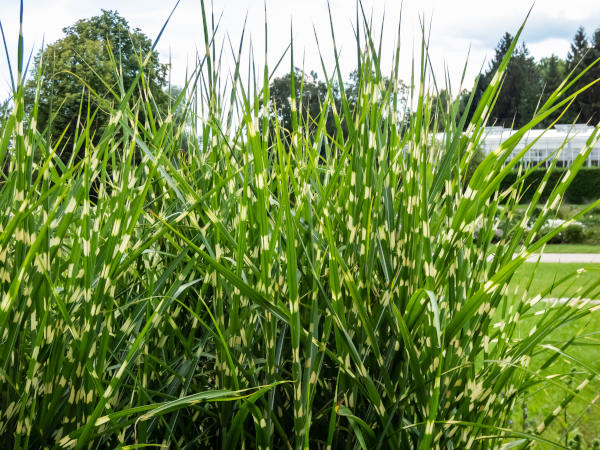
Where & when to plant Miscanthus
Position - The best flowering occurs in full sun, though light shade is also tolerated, and in fact recommended for variegated forms, such as ‘Little Tiger’, which can scorch in too much sunlight.
Soil - Happy in most soils, though avoid excessive winter wet.
Flowering Period - Summer
Hardiness - Hardy. To what extend depends on the cultivar – a handful, such as ‘Boucle’ are rated H5, meaning minimum temperatures of -10 to -15°C. Most are H6, meaning -15 to -20°C, and a few are hardier still (‘Red Cloud’ an example), with the maximum rating of H7, i.e., -20°C and beyond.
For best results, plant in autumn or spring. An autumn planting can be done by those gardening in mild conditions (and broadly speaking, this is the southern half of the UK), and who have well-draining soil. For those liable to cold winters (generally the northern half of the UK), or with very heavy soil, it is best to wait until spring. Planting can also be carried out in summer though be prepared to water frequently.
Miscanthus makes a fine freestanding specimen plant, though is perhaps at its best woven throughout a border where it provides texture and movement. It can also make good waterside planting, and the taller forms are useful as temporary summer screening. Popular in both fresh and dried flower arrangements, miscanthus also makes a good inclusion in a cut flower garden. Compact cultivars such as ‘Red Cloud’ or ‘Little Tiger’ do well in a container.
How to plant Miscanthus
- For planting in the garden, dig the soil area removing any large stones and weeds and breaking up any lumps. Mix in a little organic matter such as manure or garden compost. Rake level and firm with your heels. Rake level again.
- Water plants well and allow to drain before planting.
- Dig a hole twice the size of the root-ball.
- Place the plant in the hole, ensuring the top of the root ball sits level with the surface of the soil. Too low and the plant may rot, too high and the roots can dry out.
- Backfill with soil and firm in gently with your foot.
- Soak well with water.
- Mulch around the base with well-rotted organic matter.
- For planting in a container (remember, smaller forms are best for this), first choose an appropriately sized pot. Miscanthus is fast growing and can be expected to reach full size in two years, so it’s fine to err on the larger side when choosing a pot. Ensure there are plenty of drainage holes in the bottom.
- If you are using a heavy pot, it can be a good idea to fill and plant it in situ to save yourself the trouble of moving once full.
- Use a good quality potting compost with plenty of horticultural grit mixed in, and, if not already present in the compost (check the description on the bag) some slow-release fertiliser granules.
- Start by partially filling the pot with compost; enough so that when placed on it the upper surface of the root ball is about 3cm lower than the top of the pot.
- Infill all the space surrounding the root ball with compost, firming down with your fingers then adding a little more so the plant is held tight.
- Pick up the container and lightly tap on the potting bench or ground a few times to help further settle the compost around the plant.
- Soak well with water.
- A mulch with horticultural grit will look attractive and help to prevent a ‘cap’ or crust forming on the top of the compost (something container plants can suffer due to the artificial nature of their watering).
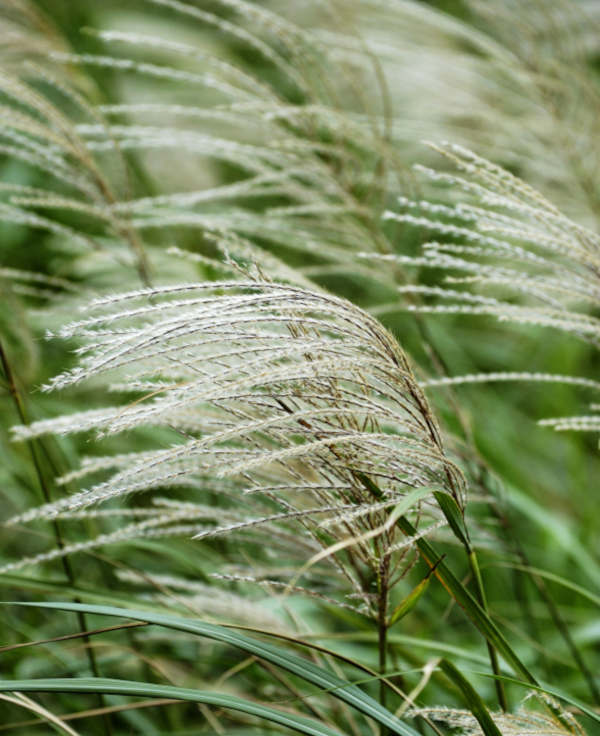
What to plant with Miscanthus
There can be few better sights than a mix of late summer perennials and ornamental grasses catching the rich, mellow light of the turning season. Think persicaria, echinacea, Japanese anemone, sedum, aster, rudbeckia, coreopsis, and helenium, as well as other swaying grassy companions such as deschampsia, panicum, and stipa.

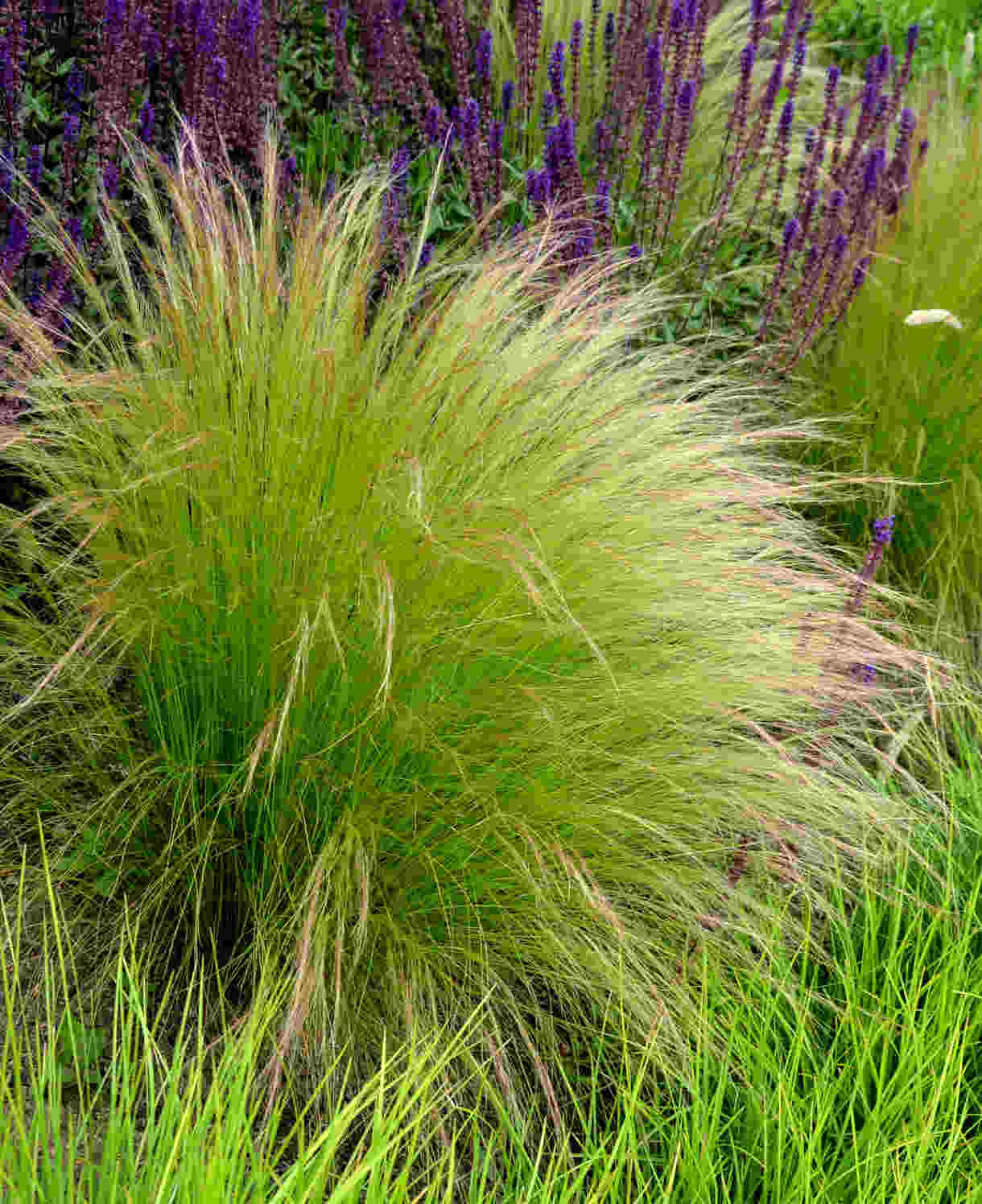

How to care for Miscanthus
Pruning and Deadheading
Cut the whole lot down to just above ground level in late winter to early spring, just before growth resumes. Leaving the cut back until this point (rather than doing it in autumn) allows continued enjoyment of the beautifully faded flowers and foliage throughout winter, while also protecting the crown from frost and rain and providing a habitat for overwintering wildlife.
Either remove prunings to the compost heap, or chop into 20-30 centimetre lengths and leave in situ as a mulch.
Watering
Miscanthus is not a particularly thirsty plant, though does need watering in the early stages. When planted in the open ground give it a good initial soaking, and then a few more over that first summer while the roots establish. After this, miscanthus is drought tolerant and should be largely self-sufficient.
Miscanthus in a container requires more help and should be watered regularly throughout each growing season. Allow the top few centimetres of compost to dry out each time, though be aware this can happen in as little as 24 hours during the height of summer.
Feeding
On all but the very poorest of soil, an annual mulch of organic matter should provide sufficient nutrients for your miscanthus. This might be a layer of manure, garden compost, or chopped up pruning material spread over the soil around the plant (see above). Mulch has the added benefit of suppressing weeds and locking in moisture and is best done in autumn or spring (the latter if using pruning material).
If your plant looks in need of an extra boost or you garden on very poor soil, applying a general purpose granular feed to the surface of the soil and lightly working in (known as a ‘top dress’) can reap benefits. Do this in spring, and then again in midsummer if needed.
Permanently container-grown plants rely more on the gardener for nutrition. Get off to a flying start by making sure you use a good quality compost, then throughout the growing season (March to September) apply a liquid feed every 3-4 weeks.
Cold Protection
Miscanthus is hardy enough to withstand a UK winter without the need for additional protection. Having said this, leaving growth intact until spring is advised to protect the crown from rain and frost exposure.
Pests and Diseases
Miscanthus is considered problem free.
How to propagate Miscanthus
The quickest and easiest way to propagate miscanthus is to lift and divide established clumps in spring. Note that very mature clumps may require the efforts of two people.
- Choose a day when the soil is not frozen or waterlogged.
- Dig the plant out of the ground.
- Shake off any excess soil.
- Separate the plant into sections using either swift, cutting blows with a sharp spade, or two forks inserted back-to-back with tines touching, handles then pushed together to prise the plant apart.
- Discard old, damaged, or surplus pieces, keeping healthy, vigorous material.
- It is worth being aware that miscanthus divisions may take a while to re-establish, so rather than planting smaller pieces straight back into the ground it can be a good idea to pot them up and grow on in a cold frame or unheated greenhouse until they’ve filled out.
- Plant as above.
* Many plants carry Plant Breeders Rights and cannot be propagated for commercial purposes.
Common Miscanthus questions
How quickly does miscanthus grow?
Expect miscanthus to reach full size in two years.
Does miscanthus need sun?
Yes, this grass prefers full sun. It will grow in light shade, though is likely to produce fewer flowers. Deep shade is best avoided.
The exception to this advice is variegated forms, which do better in light shade (again, full/ deep shade is a ‘no-no’).
Can I grow miscanthus in a container?
Yes – miscanthus is happy spending life in a pot. Small forms are best (see above).
Is miscanthus drought tolerant?
It is – narrow-leaved varieties especially so.
Some years my miscanthus seems to flower better than others. Is this normal?
Miscanthus flowering can vary according to weather, with the most abundant flowers to be had after a long, hot summer.
